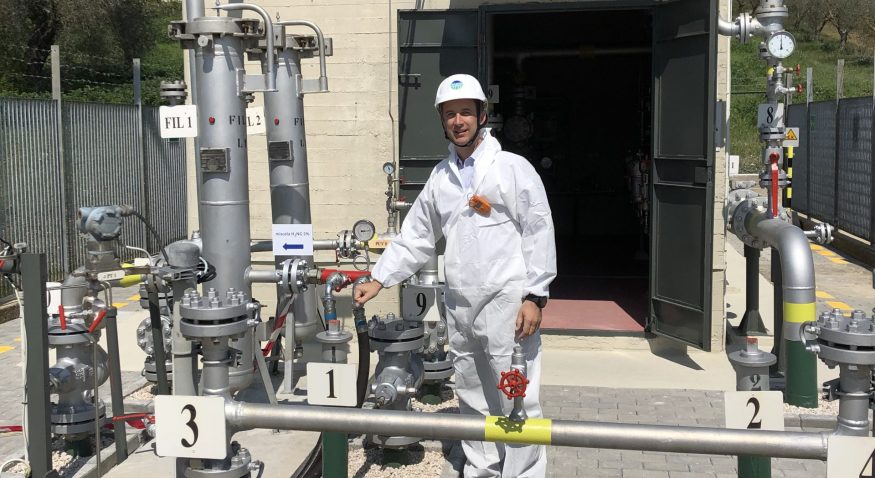- Our DNA
- Innovation Lab
- Publications
- Energy Transparency
- Press Corner
- Events
- Contact
- Subscribe
- Membernet
- My account
- Search
- Follow us at LinkedIn
- Follow us on Twitter
- Follow us on Instagram

Snam was the first company in Europe to introduce a mix of hydrogen and natural gas in its high pressure transmission network, an initiative aimed at advancing the energy transition through the promotion of hydrogen as a clean energy source.
The pilot project, which successfully took place in Contursi Terme, in the province of Salerno, in December 2019, involved supplying a 10% H2NG (hydrogen-natural gas mixture) for a month to two industrial companies in the area, a pasta factory and a mineral water bottling company. The experiment built on the successful results of Snam’s previous successful trial in the area, undertaken in April 2019, which involved a 5% Hydrogen blend.
The project generated wide international interest, defined by Bloomberg News as “a shift toward greener energy sources” and by the Financial Times as “historic”.
At present, Snam is committed to verifying the full compatibility of its infrastructure with increasing amounts of hydrogen mixed with natural gas, as well as studying hydrogen production from renewable electricity.

As also outlined in Snam’s CEO, Marco Alverà’s book on the topic, “Generation H”, the results of this experimentation could have a positive impact in kick-starting the green hydrogen economy and reach Europe’s decarbonisation targets:
Once proven a feasible option, inserting a blend of Hydrogen within the existing gas network could help to generate demand and build scale, boosting the hydrogen value chain and bringing down its costs to reach $2 per kg and making it competitive with fossil fuels in the long run.
It also offers a way to leverage the significant gas infrastructure asset in Europe (2.2 million kilometres of gas pipelines and 1,200 TWh of underground storage capacity), and therefore does not require significant investments in infrastructure to advance the energy transition.
It would also allow Europe to position itself as leader of the energy transition, and generate a Hydrogen economy that would create jobs, safeguard menaced ones and help citizens reap the benefits.





































































